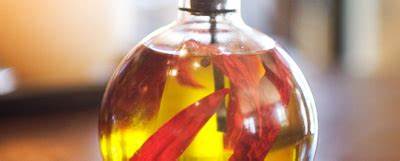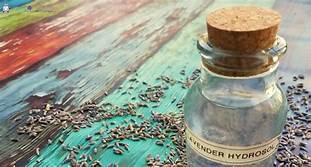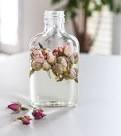How the Monograps are Presented






How the Monograps are Presented
The profile of each hydrosol is given in three sections: Aroma and Taste, " Stability and Shelf-Life," and "properties and Applications.
" I have listed the hydrosols in alphabetical order by their latin name, but below I have provided a chart of common names and pH values arranged alphabetically by common names so you can reference the Latin names and find them in the book.
This is done for reasons of clarity and because plants have correct names just as people do, and they appreciate it greatly when we bother to learn them.
The abbreviations flos, ec, z, and fe, that sometimes appear after the Latin name refer to the flower, bark, zest, and leaf, respectively.
Contraindications
Avoid means what it says; don't use it under the specific conditions listed. Contraindications are rare with hydrosols, so if they are mentioned, it's for a reason.
Reference: Hydrosols: The Next Aromatherapy: Suzanne catty
The Three-Week Internal Protocol - Hydrosols








The Three-Week Internal Protocol - Hydrosols
In the three-week protocol, thirty milliliters (two tablespoons) of hydrosol dissolved in one litre of distilled water or spring water is to be consumed throughout the day. This is repeated daily for twenty-one days, then stopped for seven days. [one table spoon] of hydrosols, not thirty.]
This protocol is most useful when addressing specific health concerns and issues of a constitutional nature. For instance, lymphatic congestion that is causing swollen lymph nodes could be treated with a three-week protocol of bay laurel. If the swelling in the nodes disappears in the first few days, it is still worth continuing the treatment, as this helps create an environment in which the symptoms are less likely to reoccur.
However, if the nodes are still clear after the seven days off, you would know that you do not need to resume the treatment. A constitutional predisposition to asthma attacks in stressful conditions could also be treated with the three -week protocol. In this case we would aim not at dealing with the asthma but treating a stress response.
Hydrosols of lemon balm, saint John's wort, and neroli are a few options; they could be combined or used individually. If the body is less likely to become stressed, then the attacks are less likely to happen. This also helps break the learned stress response.
If a certain situation no longer stresses you during the three weeks you are consuming the hydrosol, it is less likely to stress you in the future. In this case the week off would determine whether another three-week cycle should be undertaken based on the reoccurrence of the asthma attacks.
Reference: Hydrosols: The New Aromatherapy: Suzanne Catty
Protocols - Hydrosols








Protocols - Hydrosols
The standard dilution rate for the internal use of hydrosols for therapy is thirty millilitres (two tablespoons) of hydrosol diluted in one litre (thirty-two-ounces) of water. If you wish only to flavour your water, use the smallest amount necessary to give the desired intensity of taste. Of course, using only a tiny amount of hydrosol does not mean that it does not have an effect on the person.
Hydrosols are very powerful, physically and vibrationally. I have already discussed the homeopathic comparison, so do bear this in mind if you flavour your water on a regular basis. Never choose a hydrosol with properties that may be in appropriate to your body or mind. You will often be drawn to what you need, but it is always important to check the properties of any given hydrosol before you start using it.
In holistic health, treatments are often given on a three-week basis. You use the remedy, oil, herb, or preparation every day for three weeks, then stop for one week. The body needs time to register, process, and then incorporate changes and adjustments that the treatment has made to be assimilated.
You allow the health to come to a new balance, a new homeostasis, After seven days without treatment you will be able to reassess the health condition and make a better decision on what else was needed , if anything. If you keep making changes without cease, the body does not have time to catch up, and you may continue treatment longer than is necessary or advisable, Use respect, less is more.
Reference: Hydrosols: The Next Aromatherapy: Suzanne Catty
Chemotypes













Chemotypes
We are dealing with the therapeutic properties of Hydrosols, we must be as specific as possible concerning the origins of the waters. When it comes to the subject of chemotypes, there is still much confusion and misunderstanding in aromatherapy circles. I have seen articles printed in the journals of reputable organizations that completely confused chemotypes and functional groups) the chemical groups in essential oils and hydrosols), which is really a shame because this promotes confusion, not education and growth.
A chemotype (CT) occurs when a plant of a specific genus and species produces a particular chemical in a higher than normal amount because of geographic location, weather, altitude, insect and environmental interactions, and the like.
A chemotype is not a different species or genus, nor is it a type of chemical; it is merely a chemical anomaly within the plant that occurs naturally. A case in point is thyme, specifically the genus Thymus and the species vulgaris. Thyme produces at least six different recognized chemotypes.
At least four of these are available from good aromatherapy suppliers to red thyme and white thyme, indicating those that are potentially democaustic, red, versus those that are not democaustic, white. This may be of some help to the practitioner, but it is not the whole story. Red thyme could be thyme CT carvacrol of thyme CT thymol, while white thyme could be thyme CT linalol or thyme CT geraniol.
Thyme CT thuyanol contains an alcohol (alchols are a functional group) that has as much "killing power" as a phenol (another functional group). It could, therefore, be considered red thyme by some, but others might consider it white thyme, since thuyanol causes no dermocausticity even undiluted but is strong enough for the most nasty infection.
Then there is thyme CT paracymene, a monoterpene chemotype (monoterpenes are a functional group) that one would probably consider white thyme, since monoterpenes are not particularly dermocaustic unless oxidized. However, thyme CT paracymene may cause skin irritations in sensitive people, and therefore it might just as easily be labelled red thyme. Thus, to refer to thyme in simplistic terms can only increase confusion and a fear of using the oil. This is not healing.
In understanding the complexity, using thyme becomes easier. By being specific, the user can choose the most effective treatment and remove a good part of the guesswork. So, a fungal infection on the skin could be successfully treated with an alcohol chemotype like thyme CT linalol, while a chronic condition of this type may respond better to a stronger phenol chemotype.
As this is a dermal infection requiring topical applications, you could use thyme CT thymol but only in low dilution owing to its dermocausticity, or you should turn to the unique thyme CT thuyanol, since it is not irritating to the skin but acts like phenol. A blend to treat this kind of condition could contain both thyme CT linalol and thyme CT thuyanol for maximum efficacy.
I refer to separate chemotypes of hydrosols so that the users of this book can look for the best possible choice from the many options available. Also, it is the sign of good distillers and/or suppliers that they offer chemotype-specific hydrosols. In all likelihood, this means they are producing aromatics specifically for aromatherapy purposes only.
Reference: Hydrosols The Next Aromatherapy: Suzanne Catty
Articles - Most Read
- Home
- What are Hydrosols
- What are Hydrosols-2
- The Monographs
- How to Make a Hydrosol
- Table of Common Latin Names and pH Values - F - O
- Distilled or Extracted Specifically For Therapeutic Use - 3
- Kurt Schnaubelt
- What isn't a Hydrosol?
- Table of Common Latin Names and pH Values - P - S
- Wholly Water!
- Blue Babies
- Supply and Demands
- Mature Skin
- Recipes Alpha F
- Hydrosols In The Marketplace
- Chemicals: Friends or Foes?
- Hemorrhoids
- Nelly GrosJean
- Water as Medicine
- The Educated Consumer
- Genitically Modified Plants
- Influences
- Water Quality
Articles-latest
- Daucus carota/Wild Carrot Seed - pH 3.8-4.0
- Cupressus sempervirens/ Cypress-pH3.5-3.7
- Coriandrum sativum/Coriander Herb-and-Seed
- Comptonia peregrinal/Sweet Fern- pH 3.8
- Citrus clementine (fe) Clementine Petitgrain- pH 4.3-4.4
- Citrus aurantium var. amara (flos) /Neroli Orange Blossom-pH3.8-4.5
- Cistus ladaniferus/Rock Rose-pH 2.9-3.1
- Cinnamomum zeylanicum (ec) Cinnamon Bark-pH3.3
- Chamaemelum nobile/Roman Chamomile - pH 3.0-3,3
- Centaurea cyanus/Cornflower/Bachelor's Button-pH 4.7-5.0
- Cedrus atlantical/Cedarwood/Atlas Cedar-pH 4.1- 4.2
- Hydrosols -The PH - Anomalies
- Hydrosols- Establishing Shelf Life and Stability
- Boswellia carterii/FRANKINCENSE
- Asarum canadense/ Wild Ginger/Canadian Ginger
- Artemesia vulgaris / Artemesia
- ARTEMESIA DRACUNCULUS - TARRAGON
- Angelica archangelica / Angelica Root - Hydrosols
- The Key, or More Correctly, the pH - 2 - Hydrosols
- The Key, or More Correctly, the pH-Hydrosols
- The Hard pHacts - Hydrosols
- Calamus Root/Sweet Flag - ACORUS CALAMUS
- Yarrow - Achillea millefolium - Hydrosols
- Balsam Fir - Abies balsamea - Hydrosols

